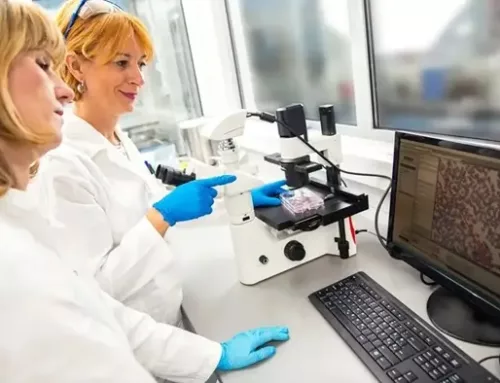
Zeolites are crystalline materials with a porous structure. They have extensive applications in catalysis, adsorption, and ion exchange. Furthermore, these minerals feature a three-dimensional framework of tetrahedrally coordinated SiO4 and AlO4 units. Oxygen atoms link these units, forming the interconnected structure. As a result, the framework creates channels and cavities, producing an open structure. This structure can accommodate a variety of guest molecules.
Therefore, zeolites have become indispensable in many industrial processes. For example, they play a crucial role in petrochemical production. Additionally, they are vital for wastewater treatment and environmental protection. Their unique properties make them highly valuable across multiple applications.
History of Zeolites: From Discovery to Industrial Breakthroughs
The history of zeolites dates back to the 18th century. In 1756, Swedish mineralogist Axel Fredrik Cronstedt first observed these crystalline materials. At the time, he was studying the mineral stilbite. When he heated it with a blowpipe flame, steam and bubbles appeared. This reaction led him to believe that the mineral contained water. He hypothesized that its structure trapped and then released this water. Consequently, he named the mineral “zeolite,” from the Greek words “zeo” (to boil) and “lithos” (stone), since it seemed to boil when heated.
However, scientists did not fully understand zeolites’ potential until the 20th century. They discovered the minerals’ remarkable ion-exchange properties. This breakthrough revolutionized research and led to the development of synthetic zeolites in the 1950s and 1960s. These synthetic versions opened up new possibilities for industrial applications. Unknowingly, Cronstedt’s discovery had paved the way for diverse and extensive uses of zeolites.
Zeolites’ Porous Crystalline Structure – Industrial Significance
Zeolites are crystalline, nano-porous materials found in nature as minerals or synthesized in laboratories. Their crystal structure features interconnected TO4 tetrahedra, where T typically represents silicon and/or aluminum. However, high-silica zeolites are the most important for industrial use. They provide high thermal and hydrothermal stability under demanding process conditions.
These tetrahedra link through corner-sharing oxygen atoms, with each pair of tetrahedra sharing one oxygen atom. The arrangement of these tetrahedra determines whether a mono-, two-, or three-dimensional microporous network forms. This network creates a system of pores and cavities that defines the material’s properties.
Zeolites’ unique structural characteristics make them extremely valuable in industrial applications. Their microporous nature offers a high surface area and selectivity for specific molecules. As a result, they excel in processes like gas separation, purification, and catalysis. Additionally, researchers can modify the zeolite framework to tailor properties for specialized applications. This adaptability makes zeolites highly versatile in the chemical industry.
Zeolites in Environmental Remediation and Future Applications
Furthermore, zeolites have shown great potential in environmental remediation. They effectively remove heavy metals and other pollutants from contaminated soils and waters. This effectiveness comes from their ability to selectively adsorb and exchange cations. As a result, they are highly efficient in extracting contaminants from wastewater and other environmental matrices.
Ongoing research continues to explore and expand the uses of zeolites. Scientists are investigating new applications in various scientific and industrial fields. These efforts aim to maximize the potential of zeolites, making them even more valuable for environmental and technological advancements.
Zeolites’ Porous Crystalline Structure synthesis
The synthesis of zeolites is a complex, carefully controlled process. It requires the precise combination of chemicals and specific environmental conditions. Efforts to synthesize zeolites in the laboratory began in the 19th century. In 1862, St. Claire Deville made one of the earliest attempts.
However, the most significant advancements came in the 1950s. Milton and Breck at Union Carbide revolutionized zeolite synthesis from an industrial standpoint. They developed a method known as reactive gel crystallization. This method has become the standard procedure for synthesizing zeolites today. Their work led to the discovery of Al-rich zeolites A and X, as well as zeolite Y. Zeolite Y remains the most widely used catalyst in fluid catalytic cracking, a crucial process in the petroleum industry.
Hydrothermal Synthesis: A Common Method for Zeolite Production
Another common method for synthesizing zeolites is hydrothermal synthesis. This process involves reacting an aluminum and silicon source in water under high temperatures and pressure. Typically, the starting materials include alkali silicates and aluminates, such as sodium silicate and sodium aluminate. These components are mixed in a specific ratio to ensure proper synthesis.
Next, the mixture is heated under autogenous pressure. Temperatures range from 100°C to 250°C, and the reaction time can last from several hours to several days, depending on the desired zeolite. During the reaction, aluminum and silicon particles form a gel-like substance. This gel gradually solidifies, creating crystalline zeolites.
Careful control of temperature, pressure, and mixture composition is crucial. These parameters ensure the production of pure and uniform zeolite crystals. Once the reaction completes, the zeolites are separated from the mixture using filtration or centrifugation. They are then washed thoroughly and dried to remove residual water and impurities, yielding high-quality zeolite crystals.
Sol-Gel Process: An Alternative Method for Zeolite Synthesis
Another method for synthesizing zeolites is the sol-gel process. This technique involves converting a liquid precursor into a solid gel. The gel is a stable colloidal suspension of nanoparticles dispersed in a liquid. It forms a network of interconnected particles or polymers, creating a three-dimensional matrix.
Next, the gel undergoes calcination to develop the desired zeolite structure. This structure can be either inorganic or organic, depending on the intended application. The sol-gel process offers flexibility and precision, making it a valuable method for creating various zeolite materials.
Detailed Steps of the Sol-Gel Process and Zeolite Modification
The sol-gel process typically starts with the hydrolysis and condensation of an alkoxide precursor. Common precursors include tetraethyl orthosilicate (TEOS) and aluminum isopropoxide. These react in the presence of an acid or base catalyst to form a colloidal solution, or sol.
Next, the sol undergoes aging at a controlled temperature. This step allows the gel to form properly. Once the gel has matured, it is dried and then calcined to develop the final zeolite structure.
Additionally, the properties of synthesized zeolites can be modified through ion exchange. In this method, existing ions in the zeolite framework are replaced with different ions, such as transition metals or rare earth elements. The process involves soaking the zeolite crystals in a solution containing the desired ions. Afterward, the zeolites are washed and dried to remove any residual solution. Depending on the ions exchanged, the modified zeolites exhibit altered properties, such as increased acidity or enhanced selectivity.
Structure of Zeolites: The Basis for Unique Properties
Zeolites are highly ordered aluminosilicate materials with a crystalline structure. This structure consists of tetrahedrally coordinated SiO4 and AlO4 units. These units link through shared oxygen atoms, forming a three-dimensional framework. As a result, the framework creates a vast internal surface area, filled with a network of channels and cavities.
The size and shape of these channels and cavities depend on the specific molecular arrangement. These structural features significantly influence the unique properties of zeolites. Specifically, the pore size and shape are critical in determining their adsorption and catalytic behaviors. The uniform and regular arrangement of these pores makes zeolites exceptional adsorbents.
Moreover, their well-defined channels provide an ideal environment for catalytic reactions. Zeolites exhibit catalytic activity because they can selectively interact with certain molecules. Only those that fit the pores can enter and react, showcasing a molecular sieving effect. Additionally, specific active sites on the internal surface enhance this catalytic activity, contributing to their effectiveness in various industrial processes.
Structure of Zeolites: The Basis for Unique Properties
Zeolites are highly ordered aluminosilicate materials with a crystalline structure. This structure consists of tetrahedrally coordinated SiO4 and AlO4 units. These units link through shared oxygen atoms, forming a three-dimensional framework. As a result, the framework creates a vast internal surface area, filled with a network of channels and cavities.
The size and shape of these channels and cavities depend on the specific molecular arrangement. These structural features significantly influence the unique properties of zeolites. Specifically, the pore size and shape are critical in determining their adsorption and catalytic behaviors. The uniform and regular arrangement of these pores makes zeolites exceptional adsorbents.
Moreover, their well-defined channels provide an ideal environment for catalytic reactions. Zeolites exhibit catalytic activity because they can selectively interact with certain molecules. Only those that fit the pores can enter and react, showcasing a molecular sieving effect. Additionally, specific active sites on the internal surface enhance this catalytic activity, contributing to their effectiveness in various industrial processes.
Future Directions of Zeolites: Expanding Possibilities
Research in the field of zeolites continues to evolve, with new applications emerging regularly. One exciting area focuses on modifying the structure of zeolites to create materials with tailored properties. Scientists are exploring ways to change the size and shape of the channels and cavities. They also aim to modify the surface chemistry to enhance adsorption and catalytic abilities.
Another promising research direction involves developing new synthetic methods. These methods aim to produce zeolites with improved characteristics, such as higher stability, selectivity, and activity. As advancements continue, the potential for zeolites to impact various industries grows even more significant, paving the way for innovative applications and solutions.
In Conclusion: The Versatile Potential of Zeolites’ Porous Crystalline Structure
In conclusion, zeolites are a group of crystalline materials with a porous structure. They have extensive applications in various industrial processes, including catalysis, adsorption, and ion exchange. Their unique structural properties, combined with a high surface area and selectivity for specific molecules, make them essential in gas separation and purification.
Moreover, zeolites have demonstrated significant potential in environmental remediation. They effectively remove heavy metals and other pollutants from contaminated soils and waters. The synthesis of zeolites remains a complex, carefully controlled process. Methods such as reactive gel crystallization and hydrothermal synthesis are the most commonly used techniques.
Ongoing research continues to explore new and exciting applications for zeolites. Scientists aim to expand their use across various scientific and industrial fields, unlocking even more possibilities for innovation and sustainability.




